- Home
- Ramachandra Guha
The Enemies of the Idea of India
The Enemies of the Idea of India Read online
Winklets: Visions through Versions
The Enemies of the Idea of India
Essay
By Ramachandra Guha
Copyright© Ramachandra Guha
First published in Outlook, January 2011
Winklet edition first published in November 2011 by DC Books in collaboration with EC Media
Publisher: DC Books
www.dcbooks.com
No part of this publication may be reproduced, or transmitted
in any form or by any means, without prior written permission of the publisher.
ISBN 978-81-264-3348-3
Designed and Typeset: DC Books
Cover Design: Athul C.T.
Disclaimer
Every effort has been made to publish an error-free edition of this book. If however, any errors or omissions are found please notify us, and we would be pleased to rectify them at the earliest opportunity.
The Enemies of the Idea of India
Ramachandra Guha
A Note on the Series
Winklets: Visions through Versions
Well researched and insightful yet not pedantic, Winklets are short e-books covering current topics. Written by well established authors, these essays and stories are tailor-made for intelligent readers who want more than just a superficial overview. Pushing the boundaries of thought, Winklets provide a broader perspective of the world around you.
A Note on the Author
Ramachandra Guha is a historian and columnist based in Bangalore. His writings cover a variety of themes including politics, environment, biography and history. Before becoming a full-time writer, Guha taught at the University of Oslo, Stanford University and Yale University and also at the Indian Institute of Science. He was a Fellow of the Wissenschaftskolleg zu Berlin and also the Indo–American Community Chair Visiting Professor at the University of California. For the academic year 2011–2 he is the Philippe Roman Professor of History and International Affairs at the London School of Economics.
Some of Guha’s important works include The Unquiet Woods: Ecological Change and Peasant Resistance in the Himalaya (1989), Environmentalism: A Global History (2000), A Corner of a Foreign Field: The Indian History of a British Sport (2002), and India after Gandhi: The History of the World’s Largest Democracy (2007). He was the recipient of the Padma Bhushan in 2009.
The Enemies of the Idea of India
I
Let me begin with two epiphanies.
A few years ago, I visited a book fair held on the seafront in Kochi. The local publishers were represented, as were Indian and foreign firms. In between the stall of Oxford University Press and a shop stocking the works in Malayalam translation of Marx, Engels and Lenin, I came across a man selling, of all things, pickles from Bikaner. His wares were contained in large open buckets, one containing aam ka murabba, another shalgam ka achar. I asked the young man how he had come from a far northern desert to participate in a book fair in this southern port. ‘Maine suna ki Keral mein mela lag raha tha’, he answered, ‘aur maine socha ki wahan ek dukan khol doon.’ (I heard that there was some kind of fair on in Kerala, so I thought, why don’t I bid for a stall there?). Thus spoke a pickle man in a salad bowl nation, adding his charmingly naïve logic to an apparently illogical country.
Some months after this encounter, I was travelling by car from Patiala to Amritsar. It was a hot day, and the countryside was monotonous. I fell asleep, and woke when the car slowed down. We were now in the market town of Khanna. I scanned the buildings and their signs. One, particularly, caught my attention: it read, ‘Indian Bank, Khanna Branch, Head Office, Rajaji Salai, Chennai.’ I was charmed and uplifted, sentiments that (especially for the young) perhaps need explaining. For ‘Rajaji’ was C. Rajagopachari, the scholar-statesman who had been Governor-General of India, Chief Minister of Madras State, founder of the free-market Swatantra Party, and author of best-selling versions of the Ramayana and Mahabharata. In his person he embodied all the Punjabi stereotypes about the Madrasi; he was slight, wore thick glasses, had never played a single sport or consumed an alcoholic beverage, and was vegetarian. Yet here was evidence of his enduring legacy in the Punjab, where—as that sign informed me—there were many whisky-guzzling, chicken-eating Sikh farmers banking their savings in an institution headquartered in Chennai on a road named after a dhoti-wearing, rasam-drinking, austere Tamil scholar.
The poet Wallace Stegner once remarked that ‘…the tracing of ideas is a guessing game. We can’t tell who first had an idea—we can only tell who first had it influentially, who formulated it in some form, poem or equation or picture, that others could stumble upon with the shock of recognition.’ So it is with the idea of India. Rabindranath Tagore used the phrase in a letter to a friend in 1921, writing that ‘…the idea of India is against the intense consciousness of the separateness of one’s own people from others, which inevitably leads to ceaseless conflicts.’ There may have been others who used the phrase before him. But it was only in 1997, when Sunil Khilnani used it as the title of his wonderful book, that his fellow citizens stumbled with a shock of recognition at what the idea of India represented.
The nationalisms of 19th century Europe, which provided the template for many later nationalisms (including those of Israel and Pakistan) united citizens around a single religion, a single language, and a common enemy. On the other hand, as articulated by Tagore, Gandhi and the Indian Constitution, the idea of India contains within its capacious borders more social diversity than any other nation. It privileges no particular religion, does not enforce a common language, and does not promote patriotism by identifying or demonising a common external (or internal) enemy.
As citizens, we ubiquitously use a humdrum manifestation of the miracle of India — namely, our currency notes, which have a portrait of Gandhi on one side and the national parliament on the other, and its denomination written in seventeen languages, indeed seventeen different scripts, each encoding a distinct, sophisticated, ancient and proud literary culture. Since rupee notes are an artefact of everyday life, we do not see or sense their significance. However, in its own way our paper currency is as marvellous and strange as the Bikaneri achar-vendor in Kochi or the signboard of the Southern bank in the Punjab.
II
The plural, inclusive, idea of India has three enemies. The best known is the notion of a Hindu Rashtra, as represented in an erratic fashion by the Bharatiya Janata Party and in a more resolute (or more bigoted) manner by the Rashtriya Swayamsewak Sangh, the Vishwa Hindu Parishad, the Bajrang Dal and other associated organisations. When Khilnani published his book in 1997, Hindutva appeared to be the major challenge to the idea of India. To the ‘theoretically untidy, improvising, pluralist approach’ of Gandhi and Nehru, he wrote, the Sangh Parivar offered the alternative of ‘a culturally and ethnically cleaned-up homogeneous community with a singular Indian citizenship, defended by a state that had both God and nuclear warheads on its side.’
Living in North India between 1988 and 1994, I experienced this challenge at first and second hand—by seeing my Muslim friends board trains under assumed Hindu names, by visiting Bhagalpur after the riots provoked by Lal Krishna Advani’s rath yatra, by witnessing a more general polarising of public opinion on religious lines. The poisonous residues of those years carried on well into the next decade, as illustrated by the pogrom against Muslims in Gujarat in 2002.
Shortly after the Gujarat riots, I was driving to the Mumbai airport from the south of the city, when I noticed the tricolour hanging out of every home on Muhammad Ali Road. As I proceeded northwards, beyond Parel into Dadar and Shivaji Park, the flags were not visible anymore. The contrast puzzled me, till I reache
d the airport and saw the live telecast of an India-Pakistan cricket match. It remains one of the saddest memories of my life—the memory of how, intimidated by decades of harassment and violence at the hands of Hindutva bigots, so many of my fellow citizens had to shame themselves into a public display of patriotism solely on account of their faith.
The threat to India from Hindutva bigotry was at its most intense from about 1989 to about 2004. When judged by political (and social) influence the threat appears to have receded, although the terrorist activities, recently exposed, of sundry sadhvis and swamis suggests that one should not be too sanguine on this score. At any rate, right-wing religious fundamentalism has now been matched in force and influence by a challenge to the idea of India from the extreme left—that posed by the Communist Party of India (Maoist). Reports and essays by Smita Gupta, Nandini Sundar, Arundhati Roy, and others have documented in detail how the rise of the Maoists is linked to the dispossession of the tribals of central and eastern India. These tribals live in India’s densest forests, along its fastest-flowing rivers, and atop its richest veins of iron ore and bauxite. As the country has industrialised, they have lost their homes and livelihoods to logging projects, dams and mines which are directed by and benefit more powerful social forces.
Even when they are not dispossessed, the tribals are actively discriminated against. Demographically concentrated in a few hill districts, they do not constitute a vote bank whose voice can, at least symbolically, be attended to by the political class. There is a contrast here with Dalits (as well as Muslims), who are more evenly distributed across India, and hence have a far greater impact on the outcome of state and national elections. Lacking adequate representation in the higher civil services, and without a political voice anyway, the tribals are subject to contempt and condescension by the officials of the forest, police, revenue, education and health departments, who are obliged by law to serve the adivasis but oriented in practice to harass and exploit them.
Altogether, the tribals have gained least, and lost most from sixty-three years of democracy and development in independent India. This is not to say that Dalits and Muslims have not been discriminated against. However, their concerns have found powerful expression through democratically elected parties and politicians. The tribals have not even had that consolation. If there was no adivasi Ambedkar, there has been no adivasi Mayawati either. This is the vacuum that the Maoists have sought to fill, with increasing success, and also with increasing sympathy among sections of the Indian intelligentsia.
Metropolitan intellectuals have been fascinated by left-wing rebels for a very long time. From Mao through Ché Guevera and Fidel Castro, onto Sub-Commandate Marcos of the Mexican province of Chiapas and Comrade Kishenji of (as the news reports have it) ‘somewhere on the Jharkhand-West Bengal border’, guerrillas in the forests or highlands have attracted admiring comment from writers and poets themselves living in the cities. The contrast, indeed, explains the intensity of their commitment. Because they themselves lead bourgeois lifestyles in a land where so many are so poor, these writers sublimate their guilt by an effusive and excessive endorsement of armed rebels who claim to speak on behalf of the deprived and disadvantaged.
In the summer of 2006, I travelled through the district of Dantewada in Chattisgarh State, as part of a group of independent citizens studying the tragic fall-out of Salwa Judum, a vigilante army promoted by the State Government. We found that the Judum had polarised adivasi society, fuelled numerous murders and killings, and displaced at least 60,000 people from their homes. Disgust and revulsion at the policies of the state did not, however, blind us to the errors of the other side. The Maoists had contributed to an escalating cycle of violence, by beheading alleged ‘informers’, assassinating village headmen, and setting off land mines which killed civilians as well as policemen. They had also blown up schools, transmission lines and railway tracks, and stopped paramedics from working in villages which were under their influence.
I knew beforehand that the Naxalites were no Gandhians, but it took a conversation with a Muria tribal to see them in clearer light. This man, a first-generation graduate and former school-teacher who had been rendered homeless by the civil war, explained to me how behind the macho image of an armed revolutionary lay a man who lacked any moral courage whatsoever. His words ring in my ears still—he said, in Hindi, Naxaliyon ko himmat nahin hain ki wo hathiyaron gaon ké bahar chhod ké hamare beech mein aake behas karé. (The Naxalites do not have the guts to leave their weapons outside our village and then come and have a discussion with us.) It was an arresting remark, deep in insight and understanding about the real meanings of democracy. Despite his machismo and certitude, the Naxalite was actually so fearful of his own self that he dare not engage in democratic debate—even with poor and unarmed villagers. If he really had confidence in his beliefs, why would he seek, in the first instance, to enforce them at the point of a gun?
The remark of the Muria teacher also allowed me to see that Maoist violence was not random or anarchic, but highly focused. Schools were attacked because the revolutionaries did not want children to be exposed to any pedagogy other than their own. The Maoists regularly murdered panchayat members and leaders (including many women) because they saw electoral democracy, even—or perhaps especially—at the village level, as a threat to their vision of a one-party state.
In the short-term, the Maoists may sometimes provide the tribal succour against the exactions of the forest guard or moneylender. In the medium and long-term, they provide no real solution. For them, the tribals are essentially cannon-fodder, a stepping-stone in a larger war against the Indian State which will end—or so their ideologues claim—with the Red Flag being planted on the Red Fort in thirty or forty years time. In enacting this fantasy they will further escalate the violence and expose the adivasis to even more suffering and discontent.
III
The history of postcolonial India, like the history of interwar Europe, is one of an unstable democratic regime in the middle, challenged from the left and right by absolutist ideologies that seek to replace it. In January 1948 Mahatma Gandhi was murdered by a Hindu fanatic; six weeks later, under the orders of Moscow, the then undivided Communist Party of India launched an armed insurrection against the Indian state. Through resolute leadership, the threats from left and right were contained, and a democratic Constitution put in place. However, ever since, the Hindu Rashtra and the Communist dictatorship have stood as sometimes recessive, sometimes aggressive, alternatives to the democratic idea of India.
The third challenge to the idea of India also goes back to the founding of the nation. This is the notion that the Indian Union is an artificial cobbling together of many rival nationalities that must, in time, break up into its constituent parts. In the summer of 1946 a section of the Nagas announced that once the British departed, they would form an independent nation of their own. In the summer of 1947, similar claims were put forward by (among others) the Dewan of Travancore, the Maharaja of Kashmir, and the Nizam of Hyderabad. August 15 1947 was marked as a day of mourning by the Dravida Kazhagam, an influential Tamil party that likewise wished to strike out for an independent nation. Some Sikhs were upset by the division of British India into India and Pakistan, since they had hoped that a third nation, Khalistan, would also be brought into being.
Many British imperialists believed that an independent and united India would not survive. These skeptics included the former Prime Minister, Winston Churchill, as well as officials serving in the sub-continent at the time of the transfer of power. The Mizo Hills, then known as the Lushai Hills, were governed by a man named A. R. H. Macdonald. In March 1947, Macdonald wrote to his immediate superior that his ‘advice to the Lushais, since the very beginning of Lushai politics at the end of the War, has been until very recently not to trouble themselves yet about the problem of their future relationship to the rest of India: nobody can possibly foretell what India will be like even two years from now, or even whether
there will be an India in the unitary political sense. I would not encourage my small daughter to commit herself to vows of lifelong spinsterhood; but I would regard it as an even worse crime to betroth her in infancy to a boy who was himself still undeveloped.’
In subsequent years, the infant developed sufficiently to persuade or coerce its recalcitrant partners to unite with it. But the process took time and money, and spilt a great deal of blood. Between 1947 and 1950 more than five hundred princely states were integrated into the Union. In 1963 the Dravidian parties formally dropped the plank of independence. The Mizos launched a rebellion in 1965; two decades later their leaders laid down arms and successfully entered the democratic process. The 1980s witnessed a movement for Sikh separatism in the Punjab; this was finally tamed, albeit with much loss of life. The 1980s and 1990s also witnessed much violence instigated by the United Liberation Front of Assam; this too, has abated, with a vast majority of Assamese seeking a better life within India rather than a separate homeland for themselves.
In 2011, three nationalist insurgencies retain their force and relevance; those in Nagaland, Manipur, and Kashmir. The first of these has been led for more than three decades by a Thangkul Naga named T. Muivah. In the late 1980s, the Dutch writer Bertil Lintner trekked across the India-Burma border to meet the Naga leader in his jungle hideout. Muivah told him that ‘…the only hope the Nagas had to achieve their independence would be if India itself broke up.’ The Nagas had made contact with Sikh and Kashmiri separatists, and Muivah ‘…fervently hoped a similar movement would emerge among the Tamils of southern India—which would indeed plunge the country into the anarchy he desired.’
The Tamils remain quite content to live within the Indian Union, and (the recent reappearance of Bhindranwale posters notwithstanding) the Sikh separatists are no longer active or influential. But the Valley of Kashmir remains on the boil; Manipur is home to dozens of armed insurgent groups; and despite thirteen years of cease-fire no agreement has yet been reached between the Government of India and Muivah’s men.

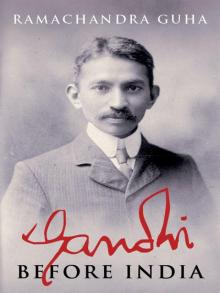 Gandhi Before India
Gandhi Before India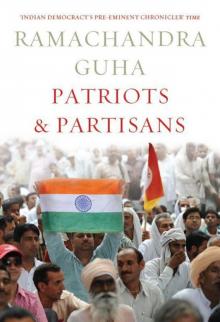 Patriots & Partisans
Patriots & Partisans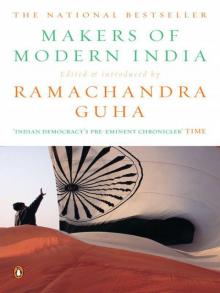 Makers of Modern India
Makers of Modern India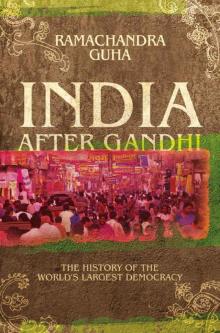 India After Gandhi: The History of the World's Largest Democracy
India After Gandhi: The History of the World's Largest Democracy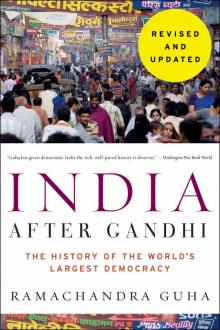 India After Gandhi Revised and Updated Edition
India After Gandhi Revised and Updated Edition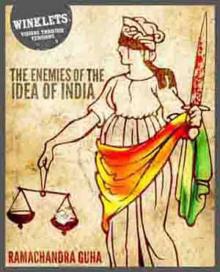 The Enemies of the Idea of India
The Enemies of the Idea of India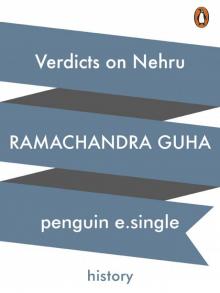 Verdicts on Nehru
Verdicts on Nehru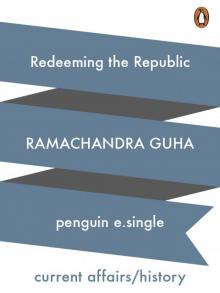 Redeeming the Republic
Redeeming the Republic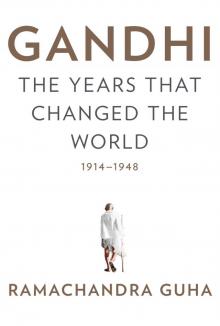 Gandhi
Gandhi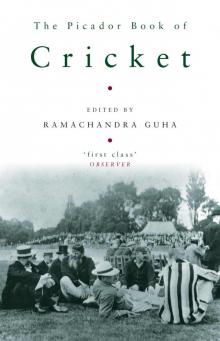 The Picador Book of Cricket
The Picador Book of Cricket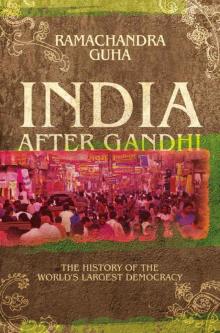 India After Gandhi
India After Gandhi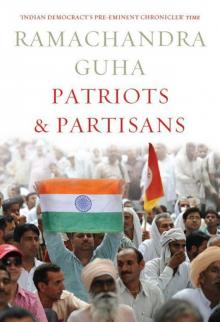 Patriots and Partisans: From Nehru to Hindutva and Beyond
Patriots and Partisans: From Nehru to Hindutva and Beyond